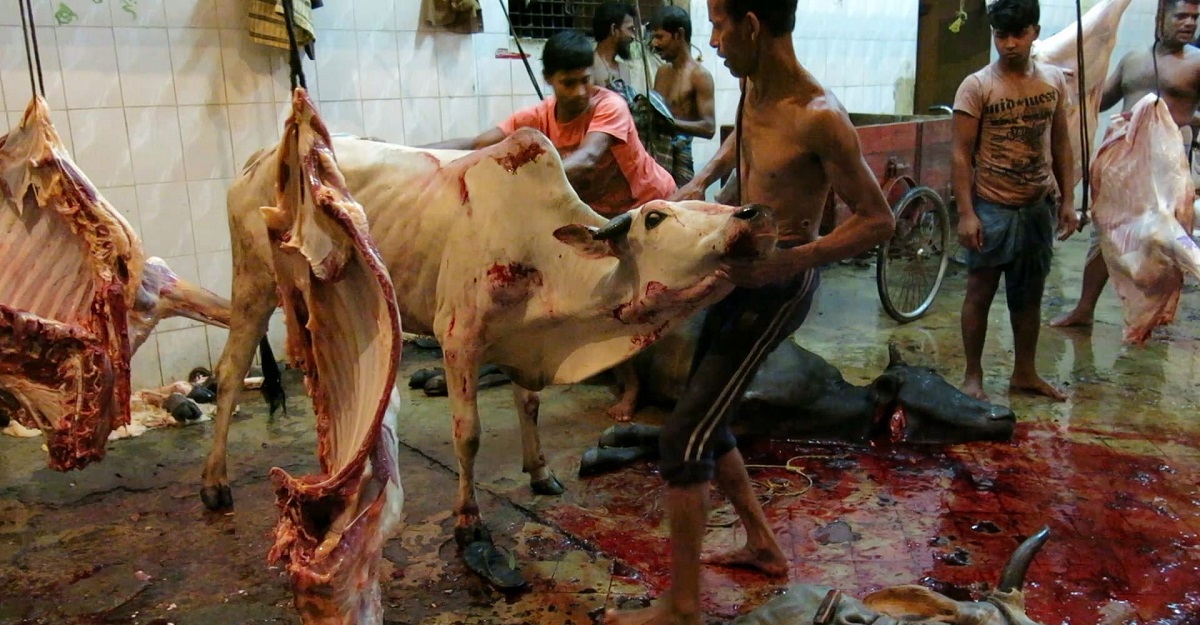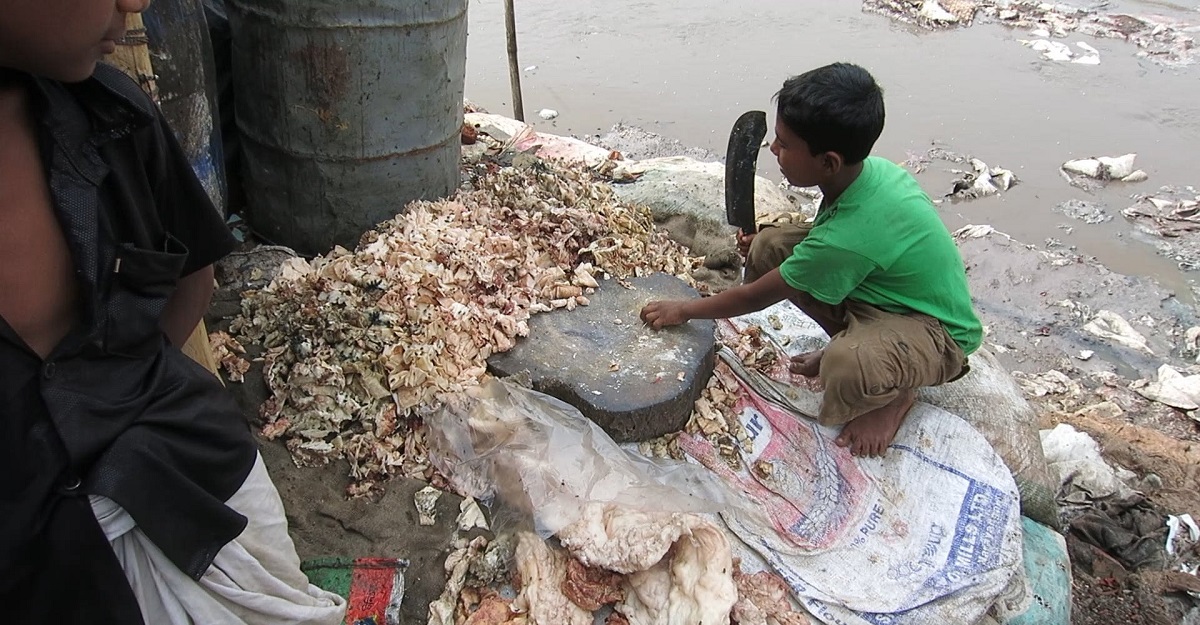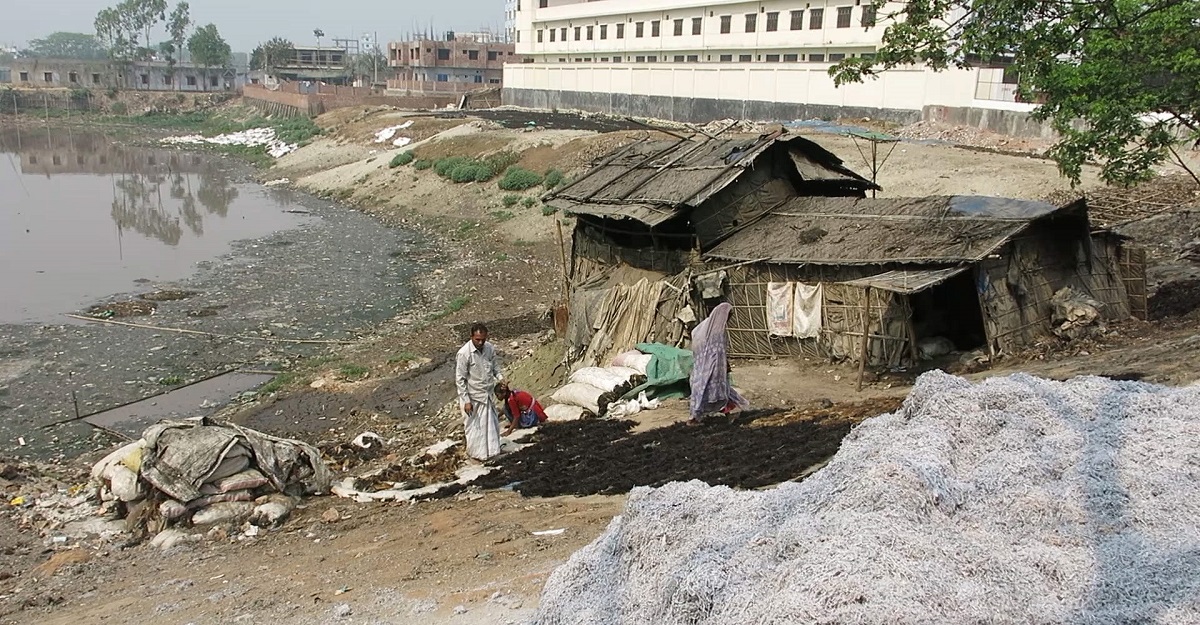UN INT Intro Text w/ Centered Large Responsive Image - *Important Note* You must UNLINK this shared library component before making page-specific customizations.
Singer Leona Lewis narrates this chilling new video exposé featuring never-seen-before footage of Bangladesh's billion-dollar leather industry.
UN MIS Responsive YouTube Video - *Important Note* You must UNLINK this shared library component before making page-specific customizations.
Long and Agonising Transports
Every year, an estimated 2 million cows from India are bound, thrown onto trucks and transported thousands of miles to Bangladesh in order to circumvent Indian slaughter bans. Video footage reveals that many cows were emaciated, exhausted and so malnourished that they couldn't stand up by the time they arrived. They suffered from broken tails and open, festering wounds. The eyewitness did not see any veterinary care given to the animals.

Skinned Alive and Slaughtered
Cows and goats are often illegally slaughtered for their skins on the streets of Bangladesh at night, and the animals are forced to watch others' throats being cut with a knife. In official abattoirs, workers bind their legs and slit their throats – all while they're still conscious. As seen in the video footage, cows are sometimes still alive and kicking as their skin is ripped off their bodies.

Dangers to Workers
Workers, including children, were documented performing hazardous tasks such as soaking hides in toxic chemicals and using knives to cut the skins, which are then used to make handbags, shoes and other leather products that are sold around the world. Children even operate machinery. The unprotected workers stand barefoot in cancer-causing chemicals and use acids that can cause chronic skin diseases. An estimated 90 per cent of these tannery workers die before the age of 50.

Poisonous Leather
The eyewitness visited several businesses in the quarter of Dhaka, where more than 150 tanneries are situated, and there isn't a single sewage plant within the quarter. Toxic chemical substances are dumped into the nearby river, killing animals in and near the water and causing a threat to public health.

Help Animals and Children
No matter where it comes from – Bangladesh, China, India or closer to home – leather is the product of cruelty. But the good news is that it's easy to turn your back on this exploitative industry. Just stop buying leather.
Bags, boots, jackets and belts that aren't made from animal skin are easy to come by. And every time you leave leather on the shelf and opt for cruelty-free options instead, you're sending a powerful message to retailers and designers who profit from hurting animals.